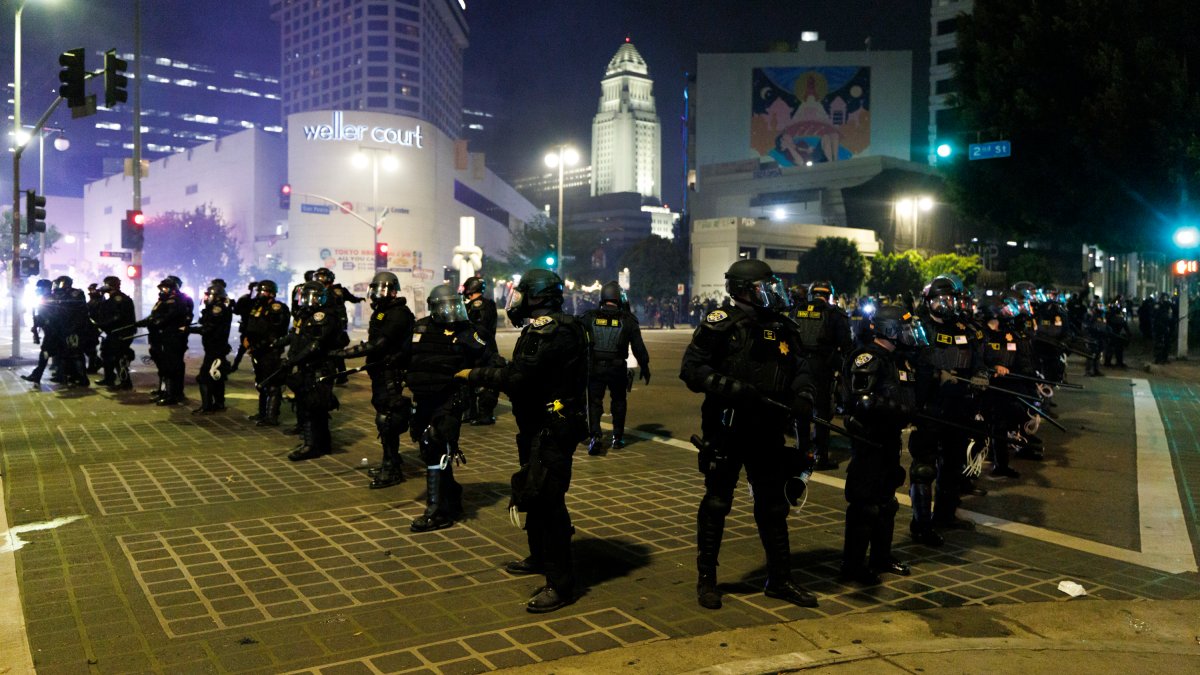LAPD officers responded to fewer calls for service in June than in May and July, likely the result of weeks of deployments of hundreds of officers for crowd control — tied to protests over more aggressive federal immigration enforcement, the department said Tuesday.
Call-for-service data analyzed by NBC4 Investigates showed the LAPD logged 106,942 calls in June, a 21% reduction from the 136,405 calls recorded in May. The number of calls rose to 129,878 in July.
“During this period of time, I would attribute it to the tactical alert,” Chief Jim McDonnell told NBCLA of the reduction being the result of the crowd control assignments that pulled officers away from their regular neighborhood patrol assignments.
“At the end of June, when the tac-alert was over, we saw the call load go back up to normal, and so I’m comfortable in saying that the relationship we have, and continue to have, with all of our communities, throughout this City, including our immigrant communities, is one of trust,” McDonnell said.
He said he was concerned that federal immigration enforcement would make LA residents who don’t have legal status afraid to call the LAPD, which by state law and policy is not supposed to get involved in immigration enforcement.
Immigration rights advocates said earlier this year they were worried that victims of domestic violence would be too fearful to call for help, but the NBC4 analysis of LAPD call data showed only a 1.74% reduction in domestic violence-related calls in June, far below the overall decline in call volume.
The LAPD said in a statement there has been a steady decline in the number of calls-for-service since last year, when the CIty expanded the use of alternative response programs for mental health, homelessness, and minor, non-violent criminal matters.
“By directing these calls to the appropriate agencies, we’ve seen an overall 5% drop in call volume, which allows LAPD to focus on situations where we can have the greatest impact,” the statement said.
There are numerous other factors that affect the number of calls received by the LAPD each month, and it is difficult to assess which of those played a role in call volume observed in May, June and July.
Data on the number of crime reports filed as a result of the calls, or the number of arrests made as a result of the calls, could provide more insight, but the LAPD has not provided up-to-date records in 2024 or 2025.
In February, the LAPD acknowledged that a similar demand for officers, who were needed to patrol the Pacific Palisades burn zone for weeks, left many other neighborhoods without their normal allotment of officers, reducing availability for calls and crime reports.
